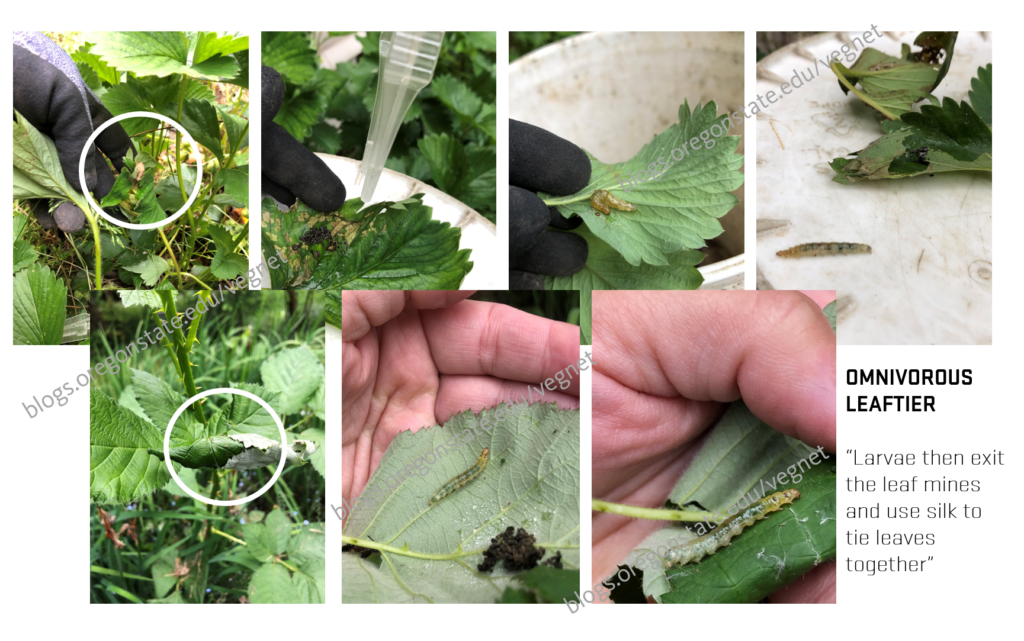Larvae of various Tortricid moths (Lepidoptera: Tortricidae) are well-known pests to fruit and nut growers, but less considered in vegetables. Here is a quick list of some economically important species in this group:
- Light Brown Apple Moth (Epiphyas postvittana)
- Fruittree Leafroller (Archips argyrospila)
- Codling Moth (Cydia pomonella)
- Filbertworm Moth (Cydia latiferreana)
- Strawberry Fruit Worm aka Omnivorous Leaftier (Cnephasia longana)
These small, bland colored moths are nearly undetectable in the landscape, but their larvae can cause billions of dollars of economic damage. Leaves are rolled or tied to provide shelter for developing larvae. Crop damage from this group can occur ‘from root to fruit’. Read more and see photos below…
Quick Facts about Omnivorous Leaftier
- Skip to 2020-21 garden observations
- Outbreaks have occurred in Oregon, but are rare. They were, however, a notable concern in field crops in 2020.
- Small larvae mine within leaf tissue, then exit the mines and use silk to tie leaves together
- Damage potential varies by crop but is common in:
- strawberries, mint, hops, hazelnuts, pears, forage crops, and grains.
Learn More
- NEW – Aug 2020 OSU Extension Publication EM9294
- There is a degree-day model available on USPEST.org
- PNW Insect Management Handbook – Leafrollers as Landscape Pests
- ID guide and general info http://idtools.org/id/leps/tortai/index.html
- W. D. Edwards, Don C. Mote, Omnivorous Leaf Tier, Cnephasia Longana Haw.: A Relatively New Pest of Strawberries, Iris and Other Crops in Oregon, Journal of Economic Entomology, Volume 29, Issue 6, 1 December 1936, Pages 1118–1123, https://doi.org/10.1093/jee/29.6.1118
- “Microlepidoptera of Importance”, advanced taxonomic training video by Dr. Richard Brown, Mississippi State Univ. https://youtu.be/HkuIPZza5XU
2021 Observations
I noticed leaftier once again in my garden/home landscape this year. 3rd-4th instar larvae were tying up my blackberries, strawberries, and mint. Here’s a few photos of 2020/21 activity – occurred during the same WEEK! (June 4-10th each year). Also, since you’ve read this far, please enjoy this video of me and my field assistant removing a Cnephasia from its cozy blanket of a home (within a strawberry leaf).
